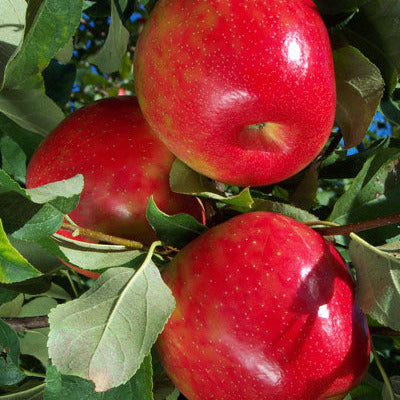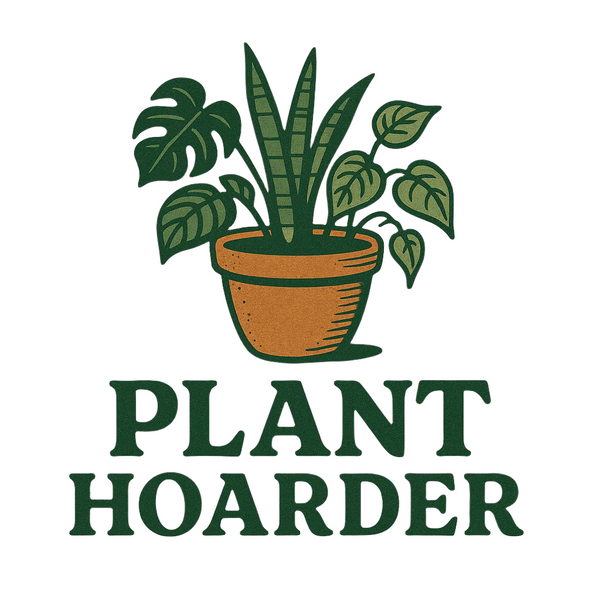Plant Hoarder
Apple, Honeycrisp
Apple, Honeycrisp
Couldn't load pickup availability
Share
Hardiness Zone:4, 5, 6, and 7
Sun Exposure:Full Sun
A Bite of Brilliance
Apple ‘Honeycrisp’ on Geneva® 969 Rootstock
Remember that first crisp snap when you bit into a Honeycrisp apple? The spray of juice, the sweet-tart dance on your tongue, the perfume that filled the air? Now imagine harvesting that magic in your own backyard—no sprawling orchard required. When the beloved Honeycrisp meets the Geneva 969 rootstock, the result is a tree that stays compact, resists disease, and fruits in record time. Let’s explore how to plant, nurture, and celebrate this stellar pairing so you can enjoy orchard-quality crunch right outside your door.
Why This Pairing Shines
What Makes Honeycrisp Special
Honeycrisp arrived in the 1990s and quickly became a modern classic. Its secret lies in extra-large cells that burst like tiny water balloons, delivering unparalleled juiciness and crunch. Balanced sugars and acids keep each bite bright and refreshing, while the flesh stays firm for months in storage.
Meet Geneva 969
Cornell University’s Geneva rootstock program created Geneva 969 to give home growers a boost. Trees on this semi-dwarf rootstock top out near 10–12 feet—easy to pick, sturdy without long-term staking, and packed with added fire-blight and root-rot resistance. Geneva 969 encourages early fruiting, puts down strong roots, and supports the Honeycrisp scion through cold winters.
Together, Honeycrisp flavor and Geneva 969 resilience form a backyard marvel: big taste, manageable size, fewer headaches.
Planning Your Planting
Finding the Right Spot
Apples need full, unobstructed sun—at least six hours daily, eight for best flavor. Choose a site with gentle air flow to dry morning dew and reduce fungal issues. Avoid low hollows where frost lingers.
Testing Soil and Drainage
Dig a small hole after heavy rain. If water stands for hours, raise a berm or switch to a well-draining spot. Honeycrisp prefers a pH between 6.2 and 7.0. A quick soil test kit keeps surprises away. Improve clay with coarse compost, aged bark, or a hint of sharp sand, but rely on native soil for most backfill so roots adjust quickly.
Matching Climate
Honeycrisp thrives in USDA Zones 4–7. Geneva 969 offers extra cold tolerance, yet steady summer heat above 90 °F can soften texture. In warmer zones, provide afternoon shade and diligent watering to preserve snap.
Planting Day: Dig, Set, and Smile
Soak the Roots
Bare-root trees arrive thirsty. Dunk them in water for about half an hour while you prepare the hole.
Dig Wide, Not Deep
Widen the pit to twice the root spread and only as deep as the roots. Keep the graft union—the subtle bump where Honeycrisp meets Geneva 969—two to three inches above finished soil grade.
Position and Backfill
Fan out roots gently, trim broken tips, then refill with the native soil you removed. Lightly firm every few inches to erase air pockets. Water thoroughly until the soil looks muddy but not flooded.
Stake for Support
Even a semi-dwarf tree benefits from a single stake the first two seasons. Use soft ties that won’t girdle bark. Remove once the trunk thickens and stands firm.
Mulch for Moisture
Apply two to three inches of straw, shredded leaves, or bark chips in a wide ring. Keep mulch an inch away from the trunk to prevent rot and rodent nibbling.
Pollination Partners
Honeycrisp sets some fruit alone but delivers bumper crops with a compatible friend nearby. Crabapples and many mainstream apples overlap in bloom—Gala, Fuji, Liberty, Enterprise, or a Snowdrift crabapple all make excellent companions. Keep the partner within about 100 feet, or graft a cross-pollinating branch onto your main tree if space is tight. Avoid spraying insecticides during bloom so bees can work their matchmaking magic.
Training and Pruning for Long-Term Shape
Building the Frame
During the first dormant season, cut the main stem back to knee height to trigger balanced branching. In spring, choose a single upright leader plus three or four evenly spaced side branches. Spread those branches to a 60-degree angle with clothespins or spacers; wide crotches make stronger limbs and encourage fruiting.
Tall Spindle Lite Approach
A Geneva 969 Honeycrisp responds well to a gentle tall-spindle style. Maintain one central leader while allowing horizontal fruiting branches to renew over time. Summer pinch vigorous vertical shoots back to four leaves in midsummer so energy flows into fruit, not excess foliage.
Three-Minute Winter Prune
Each winter, walk around the tree slowly:
-
Remove dead, diseased, or rubbing wood.
-
Thin the canopy for light and air.
-
Shorten overly long laterals by one-third to control size.
You’ll be surprised how little cutting it truly requires once the basic shape is set.
Feeding Flavor, Not Foliage
Moderate Fertilizer Needs
Too much nitrogen dilutes Honeycrisp flavor and weakens wood. For the first two seasons, scratch in about half a cup of balanced organic 5-5-5 fertilizer in early spring. After that, feed only if annual shoot growth drops below six inches.
Mulch Magic
A living mulch such as white clover fixes gentle nitrogen and invites pollinators. If a tidy look suits you better, stick with a loose layer of shredded leaves. Refresh every spring.
Water Wisdom
Geneva 969 tolerates wet periods better than many rootstocks, yet Honeycrisp texture depends on steady moisture.
-
Young trees need roughly one inch of water a week.
-
As fruit forms, increase to about one and a half inches each week for firm, spot-free apples.
A simple rain gauge takes the guesswork away. Drought stress close to harvest can cause bitter pit—small sunken spots under the skin—so monitor soil regularly.
Pests and Diseases: Prevention First
| Common Issue | Early Signs | Straightforward Solutions |
|---|---|---|
| Fire blight | Blackened, curved shoots | Prune eight inches below damage; disinfect tools. Geneva 969 helps resist but vigilance matters. |
| Apple scab | Olive spots on leaves or cracking fruit | Rake fallen leaves, choose resistant pollinizers, spray sulfur at early green-tip stage only if history is severe. |
| Codling moth | Small holes, frass near the core | Hang pheromone traps at pink-bud stage, remove damaged fruit weekly, release beneficial nematodes in soil. |
| Bitter pit | Sunken dots appearing after harvest | Ensure consistent watering and thin fruit clusters for better calcium balance. |
Good sanitation and balanced growth prevent most troubles. A strong rootstock plus careful pruning often outperforms chemical routines.
Thinning for Size and Quality
Honeycrisp overbears. Too many apples drain energy and shrink size. When fruitlets reach marble size, twist off extras so only one apple remains per cluster and each apple sits at least a hand-width apart along the branch. The sacrifice feels harsh but guarantees larger, sweeter, and more colorful fruit.
Harvesting the Crunch
-
Look for a pale yellow background color under the red blush.
-
Slice one sample; seeds should be dark brown, never milky.
-
A gentle upward roll should release ripe fruit with minimal effort.
Most regions harvest Honeycrisp from mid-September to early October. Cool nights intensify sugars and sharpen flavor, so patience rewards handsomely.
Post-Harvest Care
Handle each apple gently—bruises quickly spoil texture. Store fruit at 32–36 °F and high humidity for up to five months while flavor remains vibrant.
Beyond the Bite: Enjoying Your Harvest
-
Fresh Eating – The go-to crunchy snack; pairs beautifully with sharp cheddar.
-
Baking – Holds shape in pies and tarts; add a tart partner like Granny Smith for complexity.
-
Cider – Blends add sparkle and aromatic lift; 30 % Honeycrisp in your press is a crowd-pleaser.
-
Drying – Low-temperature dehydration turns slices into candy-sweet chips for school lunches.
Share baskets with neighbors or trade for pears, peaches, or homemade jam. Every apple carries the pride of homegrown success.
Year-to-Year Care Guide
| Season | Key Tasks |
|---|---|
| Planting year | Plant, stake, top the leader, mulch generously, water weekly. |
| Second spring | Train scaffold branches, maintain wide angles, thin any early fruit. |
| Third season | Expect a first meaningful harvest; set pheromone traps early. |
| Fourth and beyond | Perform annual winter prune, renew mulch, monitor pests with traps rather than broad sprays, enjoy increasing yields. |
Post the table on your garden shed wall to stay organized and relaxed.
Troubleshooting Quick Tips
-
Sparse bloom? Skip fertilizer next spring and double-check sunlight hours.
-
Fruit stays small? Thin harder and verify water supply in mid-summer.
-
Trunk leaning? Restake gently for one season, then remove ties.
-
Brown spots after storage? Improve late-season watering and apply foliar calcium four weeks after bloom next year.
Catch issues early, and they seldom escalate.
Growing a Tiny Orchard
Geneva 969’s modest stature invites planting two trees just eight feet apart. Partner two Honeycrisps for a sea of red, or pair Honeycrisp with a later ripener like EverCrisp to stagger the harvest. Run a single drip line in a loop under shared mulch, prune each to mirror the other, and you’ll create an abundant, space-saving orchard corner.
The Joy in Sharing Knowledge
Invite children to count pollinating bees, record blossom dates, or help measure growth. Host a tasting party where friends rate sweetness and crunch. Post photos of your first rosy blush to inspire online garden groups. Each tree becomes a story—one of patience, observation, and the simple thrill of food grown at home.
Where Crunch Meets Care
Honeycrisp already delivers unmatched flavor. Pair it with Geneva 969, and you gain a tree that fits modern yards, shrugs off disease, and starts rewarding you almost at once. With smart site selection, gentle training, and dedicated yet simple care, you’ll soon lift a chilly, sunset-striped apple to your lips and hear that iconic snap. In that instant, every shovelful of soil, every mindful prune, every bucket of water will feel worth it. Plant a tree, nurture it well, and savor a future bright with crisp, homegrown bites.


